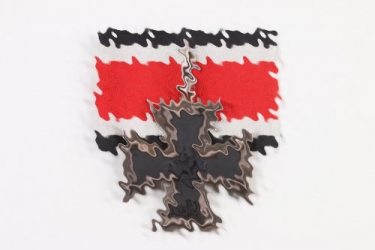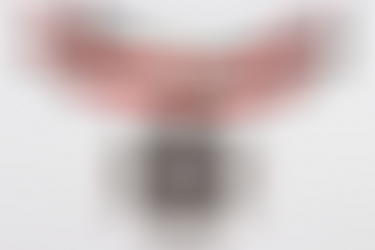3rd USA auction
Bidding on 1172 lots has ended on 19th March 2023. 75% of all lots sold
Wachtmeister Siegfried Freyer - Award Document to the Knight's Cross of the Iron Cross
GBP 0,00
Own a similar product you want to sell? We are here for you at +49 8541 9053699
-
PAYMENT
-
HOW CAN I PAY FOR MY ORDER?
AUCTIONSYou will receive an e-mail confirming your successful bids the day after the auction has ended. In your personal my ratisbon's you will be able to inform us about your most convenient payment method for this order or tell us about an alternative shipping address.
If we don’t hear from you within 24 hours, we will send an invoice choosing the payment and shipping options which we think are the most comfortable ones to you. If you decide to change your shipping or payment method after receiving your invoice, just drop us a line or visit my ratisbon's/ORDERS for any more details.
SHOP ORDERSChoose your payment method when ordering and submit your order. Once your order has been received we will send an invoice including your shipping costs and your payment instructions.
After receiving the invoice, the order must be paid within 7 days.
Please contact us to discuss layaway options.To learn more about paying at ratisbon's, please see your FAQ pages.
WE ACCEPT FOLLOWING PAYMENT METHODS
-
-
Versand
-
HOW DO YOU SHIP MY NEW TREASURES?
PACKING & TRACKINGWe usually send out orders within 1-3 working days after your payment has been received. In most cases, we are faster than this! We will inform you when your goods are being dispatched and provide a tracking number, In addition, you can always check your order status at my ratisbon's/ORDERS. Delivery times will vary depending upon the delivery destination and type of shipping service you have chosen.
SHIPPING TO ALTERNATIVE ADDRESSIf you prefer to have your order shipped to your work address or a friend during your absence, we will happy to arrange this for you. Send us an email letting us know about your new shipping address and we will be happy to send an updated invoice to you.
OUR LOGISTIC PARTNERS ARE AS FOLLOWS
-
-
OUR GUARANTEE
-
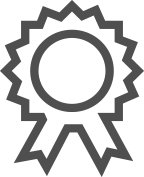 OUR GUARANTEE!
OUR GUARANTEE!We only offer collectables which to the best of our specialists knowledge are authentic. About 15% of all consignments are returned to the consignor after extensive research due to authenticity issues.
Unlike traditional auction houses we do offer a full right of return. If you are not satisfied with what you won or bought, you may return it within 14 days. Please inform us and we will instruct you on how to return the goods. For more information, please visit FAQ pages.
Important note: Cancelling bids after an auction may disappoint the consignor, who like you is a collector. This situation is easy to avoid. We encourage you not to bid on any collectable if you are unsure if it fits into your collection. Ask us to cancel your bid 24 hours prior to the end of an auction to avoid this situation.
-
COUNTRY Germany 1918 - 1945
DIMENSIONS 43.8 x 35.5 cm
WEIGHT
 US LOT US3-0098
US LOT US3-0098EAN 3000000016121
 US LOT US3-0098
US LOT US3-0098PERIOD 1918 — 1945
COUNTRY Germany 1918 - 1945
MATERIAL
DIMENSIONS 43.8 x 35.5 cm
MAKER
WEIGHT
COUNTRY Germany 1918 - 1945
 US LOT US3-0098
US LOT US3-0098DIMENSIONS 43.8 x 35.5 cm
EAN 3000000016121
MAKER
WEIGHT
Description
Wachtmeister Siegfried Freyer (February 11, 1917 – May 10, 2014)
Freyer, who came from the cavalry to the armored troops, belonged to the 24th Panzer Regiment, the only tank regiment of the 24th Panzer Division under Lieutenant General Bruno Ritter von Hauenschild , which was set up on December 3, 1941 at the Stablack military training area in Military District I. On July 7, 1941, on the Eastern Front, Freyer, commander of a Panzer IV with a long-barreled gun (F2 version) and the number "434", had his first major test. The division's Panzergrenadiers had orders to clear Voronezh of the enemy. Freyer received the order to protect the infantry from enemy tanks. In the garden next to a house and behind a high wooden fence he had his tank put into position in the morning, his crew consisted of: Driver Unteroffizier Wilhelm Schmidt (Born June 13, 1915 in Riedermören; missing in Stalingrad since January 1943), Gunner Unteroffizier Alfons Fischer (Born December 24, 1915 in Reichenberg), Loder Private Arnold Groll (Born June 13, 1921 in Oberhausen) and Funker Gefreiter Heinrich Müller (Born May 24, 1921 in Kätalingen, Anhalt; missing in Stalingrad since January 1943) After the tank was well camouflaged and the entrance and exit roads were clearly visible, the men observed the grenadiers' house-to-house combat, but were also ready with hand weapons to defend the tank from Russians or partisan that could approach on foot. It was a long, hot day filled with dust and mosquitoes. Then it happened: At 8 p.m., a T-34 emerged from a side street to the left of Freyer's position. The enemy tank tried to escape at high speed, followed by more than 30 other tanks from a Russian tank brigade. Freyer acted quickly and took steps to prevent the outbreak, albeit alone. Three shots and three hits, the first three T-34s were on fire. The gunner then reported that a shell casing had blocked the barrel. As Freyer later reported, the gun that had been delivered shortly before had still „Zahnungsprobleme”. Freyer and driver Schmidt jumped off, assembled the equipment and cleaned the gun barrel. The Russians noticed the pause and started firing wildly. The Panzer IV received no hits, however, but loader Groll was severely wounded in the head by shrapnel. He was pulled out of the tank and Funker Müller now became the loader. The fence in front of the tank was shredded, but Freyer's tank survived and became even more deadly. Eight other enemy tanks were destroyed in about 20 minutes, five T-34s and three T-60s. The remaining tanks fled in all directions, now being pursued by the German regiment, which had become aware of the battle because of the burning tanks. More tanks from Freyer's company appeared and escorted the heroes, who were now without ammunition, to Wilfried von Winterfeld and the regimental commander, Colonel Gustav-Adolf Riebel. Most of the Russian tanks were later taken by the regiment and destroyed, and Voronezh was in German hands that night. For the act of bravery, Freyer was awarded the Knight's Cross and all other crew members were awarded the Iron Cross, 1st class. The Knight's Cross award ceremony took place at the beginning of August 1942 during a break in the fighting at the regiment's command post. Only Arnold Groll, who was still in the hospital, could not take part in the ceremony. (From metapedia)
Knights Cross of the Iron Cross formal award document issued to Wachtmeister Siegfried Freyer on parchment with an integral blank front leaf, Führerhauptquartier, July 23, 1942. The ornately lettered document is executed in India ink and gold with a hand-inked signature of Adolf Hitler at the bottom. The parchment is just the slightest bit wavy, as is very common in such documents, but otherwise fine condition. Award documents for the Knight’s Cross are rare, even though Hitler granted over 7,000 of them. A severe backlog soon developed and, in the end, very few recipients of the award ever received their large formal award documents.
The document is part of a veteran bring-back that we proudly offer here for the very first time. The GI opted to bring 9 single formal documents in one red presentation leather folder (Mappe) which is offered in this auction (USA LOT US3-0100).
Condition
1-
Seller
History Trader Inc., 521 Thorn Street #165, Sewickly, PA 15143-0165, USA
NAME
Knights Cross of the Order of the Iron Cross
DATE OF INSTITUTION
1. September 1939 as the third and new grade of the re-instituted Order of the Iron Cross
AWARD CRITERIA
The Knights Cross of the Iron Cross was awarded for exceptional bravery in the face of the enemy and for outstanding merit in troop leadership. The awarding required the previous awarding of the two lower grades. The Knights Cross was solely awarded by the Führer upon the proposal of the soldiers unit and issued by the Heerespersonalamt. The Knights Crosses were stored at the Ordenskanzlei in Berlin, to be sent to the awardee after approval. There were no Knights Crosses stored at any level of the Wehrmacht before the end of April 1945.
MANUFACTURERS
The Knights Cross of the Iron Cross was produced by seven manufacturers, not including variations amongst the individual companies. The Knights Crosses can be found either unmarked (early Juncker and 3/4 Ring), with a silver content mark, with an LDO number (L/12 and L/52), and later on with the company’s Präsidialkanzlei number (2, 20, 65, and 4). Private sales were forbidden after October 1941.
AWARD NUMBERS
Accurate numbers are not known but the closest estimation is around 7,200, and most likely another couple of hundred on stock at the Präsidialkanzlei.
AWARD DOCUMENTS
The awardee received a preliminary document in A5 format and issued in the name of the Führer by the responsible personnel offices of the three branches of the Wehrmacht. The formal document (Große Mappe) was issued later and only until date of late 1942 / early 1943 due to the huge backlog.
WEARING METHOD
The Knights Cross was worn around the neck on a wider red white and black ribbon which came within the black award case of the Knights Cross.












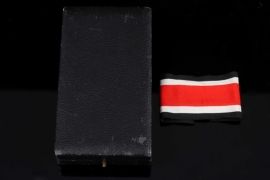

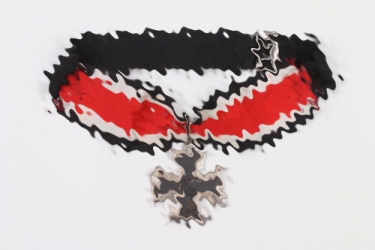
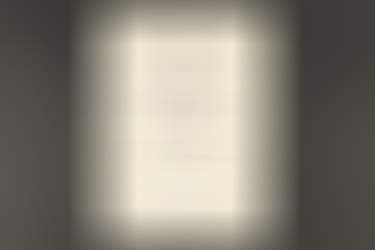


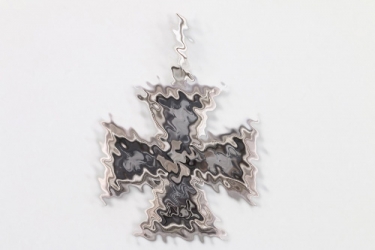

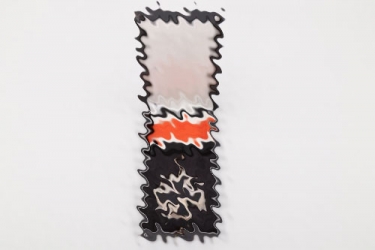
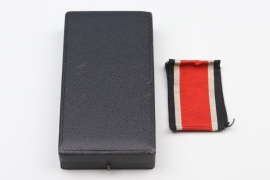


.jpg)
